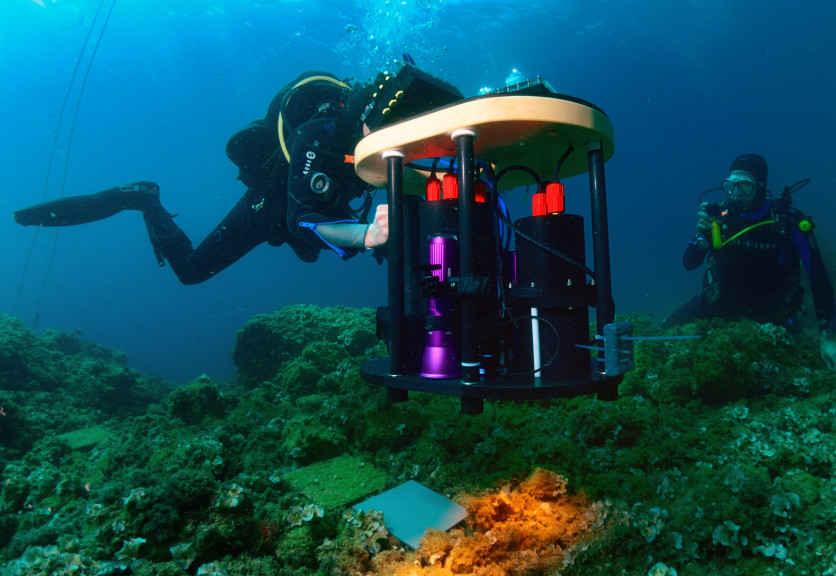
A first in the Mediterranean: use of an immersible hyperspectral camera (ECOSEAS / AMPN laboratory)
Marine Protected Areas
This 25-kilogram camera, developed by PlanBlue, a start-up from the Max Planck Institut in Germany, scans the seabed using hyperspectral imagery. Hyperspectral imaging is a technique combining imaging and spectroscopy where each image is taken for a narrow band of the electromagnetic spectrum. For example, the human eye sees light in three bands (red, green and blue) while hyperspectral imaging can “see” in a very large number of bands ranging from visible to near infrared. Each species has a particular signature (a hyperspectral image) which can therefore be used to identify it. The development of an immersible camera makes it possible to acquire underwater images of the various colonized substrates and to quickly have a precise identification of the species present. This speed and ease of identification are the main advantages of this camera. Once the validation has been carried out (association between a light spectrum and a species or a group of species), it will then be easy to determine the composition of the macrofouling species.
Another application is the measurement of spectral diversity, i.e. the diversity of spectra of a substrate. This spectral diversity could then serve as an indicator for specific diversity, a parameter widely used in benthic ecology but often difficult to assess in situ. The prospects for applying this technique go well beyond artificial reefs alone with, for example, the possibility of regular monitoring of benthos in managed areas or monitoring of invasive species in ports.
This research program is supported by the Prince Albert II of Monaco Foundation.
http://ecoseas.unice.fr/index.php/news-page/141-hyperspectral-camera-and-3d-artificial-reefs
